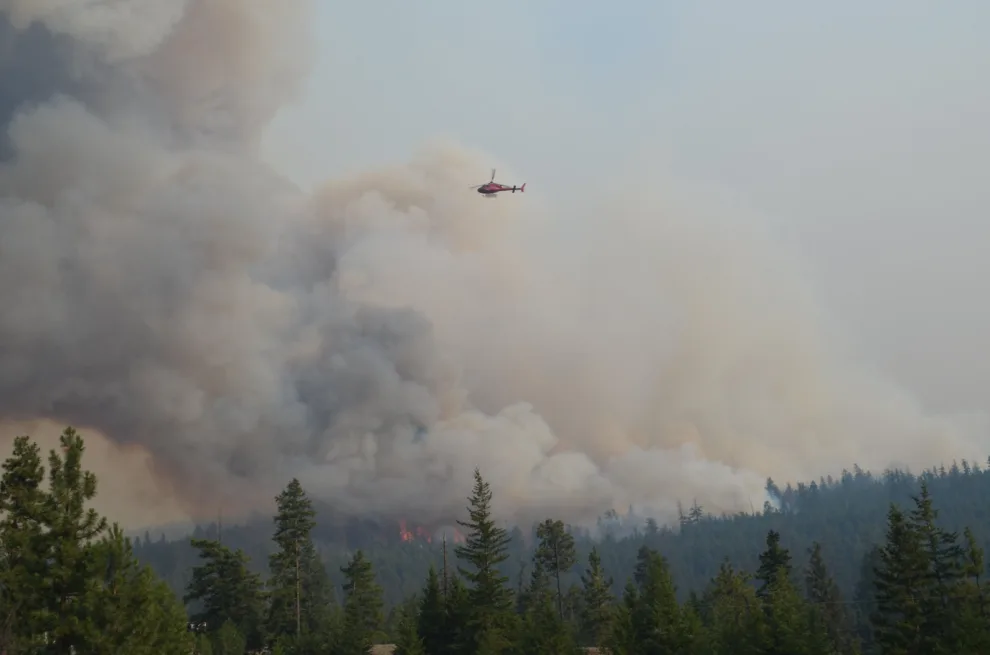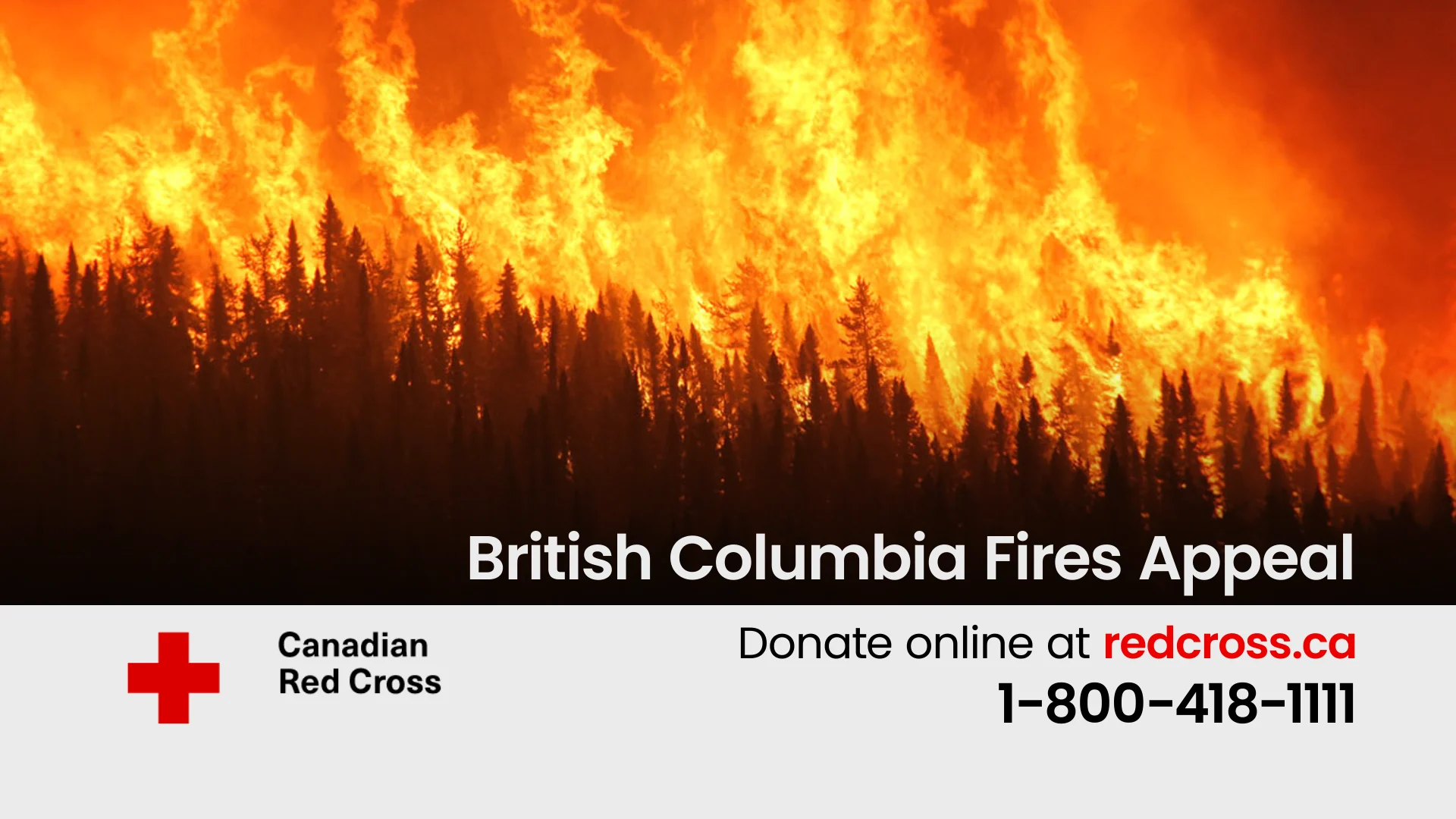
B.C. officials report 'extremely volatile' wildfire conditions, support to come
More resources are making their way to British Columbia to help with wildfire-fighting efforts, as wind and heat look likely to cause more extreme fire behaviour in coming days.
More than 3,100 people are currently involved in firefighting efforts, including firefighters from Alberta, Quebec and New Brunswick. Another 500 personnel are expected to arrive this weekend, including 100 firefighters from Mexico.
The federal government is also sending up to 350 Canadian Forces personnel to join the firefighting efforts.
Public Safety Minister Mike Farnworth says he welcomes the help from the military because B.C.'s available resources are fully assigned.
"Air support from Canadian Forces has already proved invaluable in moving crews and equipment throughout the province and aiding in precautionary evacuations,'' he said in a news release.
It is unclear when the Armed Forces crews will arrive, but the province says they will be assigned to hold existing fire lines, suppress hot spots and build new fire lines on the highest priority blazes.

The province says there are 178 helicopters and planes supporting ground crews throughout the province right now.
As of Wednesday afternoon, 299 fires are burning in the province, including the Sparks Lake fire, the largest at 470 square kilometres.
On Tuesday, the B.C. Wildfire Service said more than 3,000 square kilometres of land had been burned so far this year. There have been 1,162 wildfires to date.
EVACUATIONS
A provincial state of emergency, which comes into effect in B.C. on Wednesday, aims to help the province prepare for potential mass evacuations and secure accommodation for evacuees.
On Wednesday afternoon, residents of 356 properties in the central Kootenay communities of Edgewood and Needles were told to pack up and leave because of the growing Michaud Creek wildfire, which was last estimated at 26.7 square kilometres.
Earlier in the day, about 168 properties in the Kootenay communities of Apple Grove and Fauquier were ordered to evacuate due to the 32-square-kilometre Octopus Creek wildfire.
Most residents of Sicamous were put under an evacuation order or told to prepare to leave on Tuesday after a highway crash sparked a wildfire at 2 Mile Road.
The Nk'Mip Creek fire continues to burn on Osoyoos Indian Band land between the towns of Oliver and Osoyoos, about 40 kilometres south of Penticton. That fire is suspected to be human-caused.
WATCH BELOW: NK'MIP CREEK WILDFIRE THREATENS HOMES, BUSINESSES, AND ENDANGERED ECOSYSTEMS
'EXTREMELY DRY AND EXTREMELY VOLATILE'
Weather conditions are predicted to lead to more extreme fire behaviour through the week and into the weekend, as the forecast shows hot, dry and windy days ahead.
MUST SEE: Canada covered by smoky skies as nearly 800 active wildfires burn
Cliff Chapman, director of provincial operations for the B.C. Wildfire Service, said crews are working tirelessly to suppress the fires but warned it's likely to get worse.
Strong winds are predicted to come up from the United States, fanning flames in the B.C. Interior over the next 48 hours. A wind advisory has been issued for the southern Interior and southeastern corner of the province.
WATCH BELOW: AS STATE OF EMERGENCY DECLARED, B.C. EVACUEE SPEAKS ABOUT ORDEAL
No moisture is expected, and the southeast could see another batch of lightning that will ignite more blazes, he said.
It means firefighting efforts and control lines will be challenged.
IMPORTANT: Expert tips on how to cope with wildfire smoke
"We have the potential to see significant fire behaviour across the province, in particular in the southern half of the province where the conditions remain extremely dry and extremely volatile," he said.
Chapman said it's too early to make a direct comparison, but the conditions resemble those in 2017 and 2018, British Columbia's worst wildfire seasons on record.
WATCH BELOW: HOW TO PROTECT YOURSELF FROM WILDFIRE SMOKE
Anyone placed under an evacuation order must leave the area immediately.
Evacuation centres have been set up throughout the province to assist anyone evacuating from a community under threat from a wildfire. To find the centre closest to you, visit the Emergency Management B.C. website.
Evacuees are encouraged to register online with Emergency Support Services, whether or not they access services at an evacuation centre.
Visit www.airhealth.ca for information on how to reduce your health risk and your personal contribution to pollution levels, as well as for current and forecast AQHI values.
This article was originally published by CBC News. Contains files from Roshini Nair and The Canadian Press. Thumbnail courtesy of BC Wildfire Service










